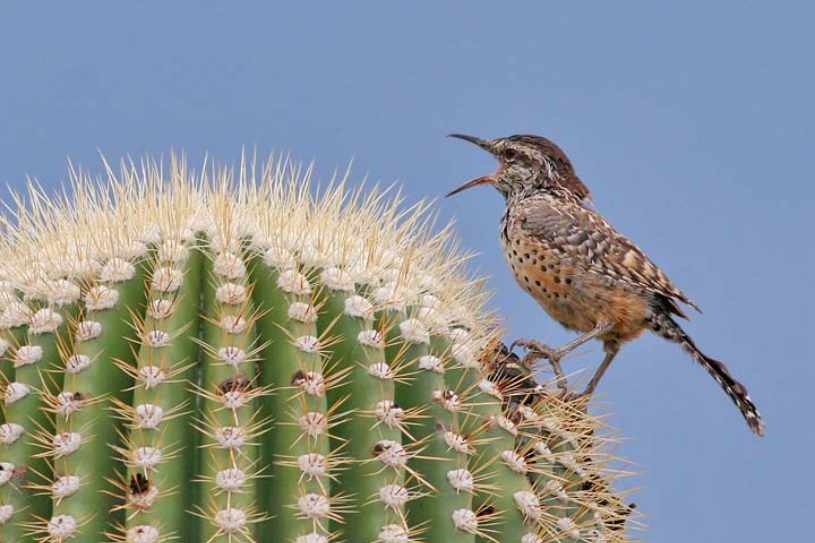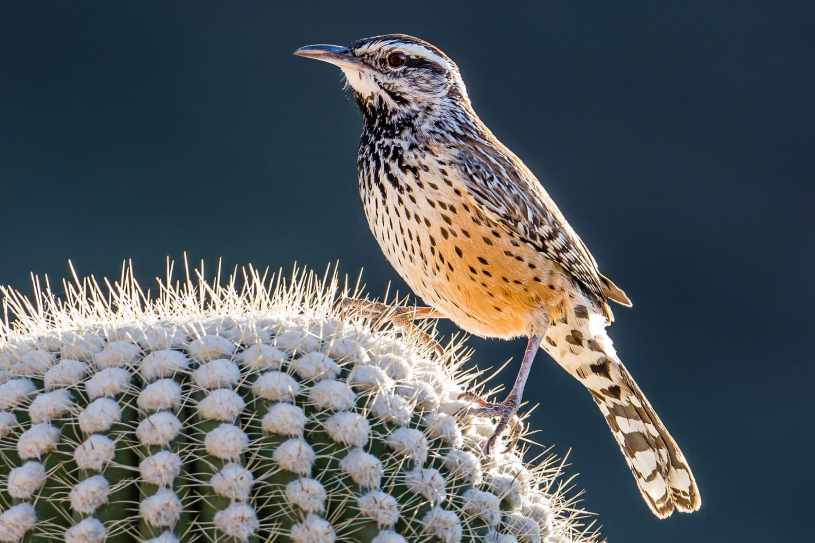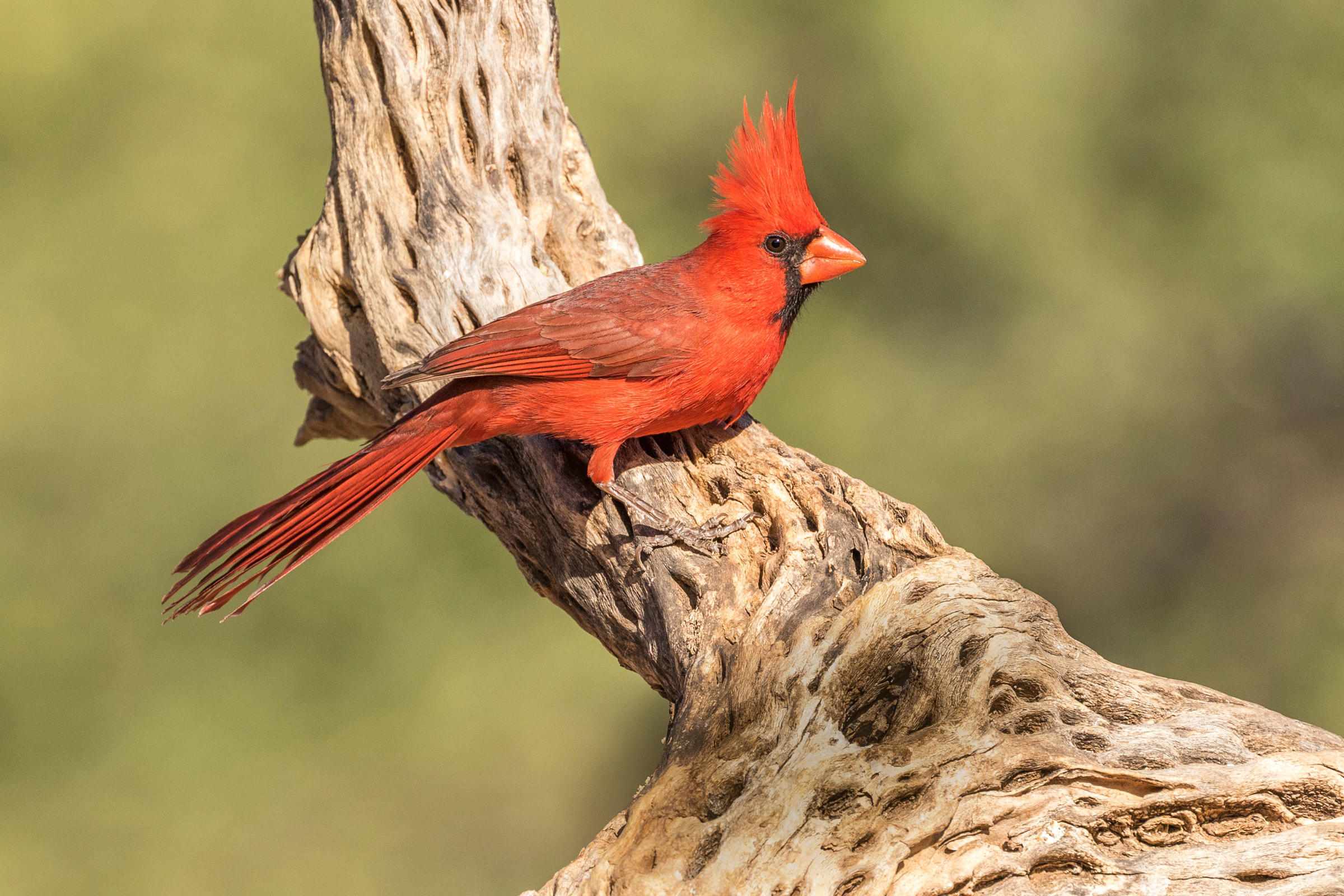In nature, state birds become iconic symbols that tell stories about the regions they represent. They carry with them the essence of a state’s unique natural heritage. In this exploration, we will discover the captivating stories of two such avian wonders – the Northern Cardinal, which is Virginia’s pride, and the Cactus Wren, which is the desert maestro of Arizona.Proud of Arizona State bird vs Virginia state bird.
Table of Contents
Significance of State Birds
State birds serve as symbolic guardians, embodying the spirit and natural diversity of their regions. Much more than mere mascots, they become living emblems that connect residents to the rich tapestry of their local ecosystems. In the case of Virginia, the Virginia state bird, the Northern Cardinal, stands as a vibrant symbol, a feathered ambassador reflecting the beauty of the Commonwealth’s birdlife. On the other hand arizona state bird “Cactus Wren” is known as a desert fighter.
Brief Introduction to the Northern Cardinal and Cactus Wren
Virginia, with its rolling hills and diverse ecosystems, boasts the Northern Cardinal as its esteemed state bird. Known for its striking red plumage and melodic singing, the Northern Cardinal holds a special place in the hearts of Virginians. Its presence, both in forests and suburban gardens, paints a vivid picture of the state’s avian abundance.
On the other side of the country, Arizona finds its representative in the resilient and desert-adapted Cactus Wren. A creature of the arid landscapes, the Cactus Wren thrives in the harsh conditions of the Grand Canyon State, symbolizing the tenacity and adaptability required to survive in the desert.
Comparison between Arizona state bird and Virginia State Birds
As we delve into the stories of these state birds, it becomes evident that the Northern Cardinal and the Cactus Wren are not just representatives of their respective regions; they are windows into the contrasting ecosystems and climates of Virginia and Arizona. The lush landscapes of Virginia, with its abundance of flora and fauna, stand in stark contrast to Arizona’s arid deserts, where the Cactus Wren finds its home among thorny succulents and towering cacti.

The Northern Cardinal: Virginia’s Avian Jewel
Northern Cardinal as the State Bird of Virginia
In the heart of the East Coast, Virginia boasts an avian gem as its state bird—the Northern Cardinal (*Cardinalis cardinalis*). Recognized for its vibrant plumage and melodious calls, this bird has become an enduring symbol of the Commonwealth’s natural splendor. As it graces backyard feeders and flits through the foliage, the Northern Cardinal captures the essence of Virginia’s diverse birdlife.
The Habitat and Characteristics of the Northern Cardinal
Thriving in a variety of environments, from dense woodlands to suburban gardens, the Northern Cardinal exhibits remarkable adaptability. Its preference for a mix of open spaces and sheltered habitats makes it a common sight across Virginia’s varied landscapes. Dressed in striking red plumage, the males stand out against the greenery, while the females, with their more subdued brown hues, blend seamlessly with their surroundings.
Beyond its aesthetic appeal, the Northern Cardinal possesses distinctive features, including a distinctive crest atop its head. This charismatic bird’s physical attributes contribute to its charm, making it a favorite subject for birdwatchers and photographers alike.
Role of the Northern Cardinal in Virginia’s Avian Ecosystem
The Northern Cardinal, with its omnivorous diet, plays a vital role in maintaining ecological balance. Feeding on seeds, fruits, insects, and small invertebrates, it contributes to the control of pest populations, ensuring the health of Virginia’s ecosystems. As a key player in the intricate web of avian interactions, the Northern Cardinal holds a significant place in the biodiversity of the state.

Unique Behaviors such as Northern Cardinal Singing and its Significance
One of the Northern Cardinal’s most enchanting traits is its melodious singing. With its vibrant red plumage, the male Northern Cardinal perches prominently to serenade its surroundings with a rich, clear whistle. This distinctive song serves multiple purposes, including defending territory, attracting mates, and communicating with other cardinals.
The significance of the Northern Cardinal’s singing extends beyond mere communication it has woven itself into the cultural fabric of Virginia. Its cheerful tunes resonate through gardens, parks, and woodlands, marking the changing seasons and becoming a cherished soundtrack to life in the Commonwealth.
Northern Cardinal Rehab: A Glimpse into Conservation Efforts
Discussion on Conservation Initiatives for the Northern Cardinal in Virginia
In the ever-changing landscape of environmental conservation, efforts to protect and rehabilitate iconic species like the Northern Cardinal are crucial for maintaining biodiversity. Virginia, recognizing the significance of its state bird, has actively engaged in various conservation initiatives to ensure the thriving presence of the Northern Cardinal (*Cardinalis cardinalis*) within its borders.
Conservationists and ornithologists in Virginia have been at the forefront of researching the Northern Cardinal’s habitat, behavior, and population trends. This wealth of knowledge forms the foundation for targeted conservation strategies, ensuring that the unique needs of this avian species are met.
Importance of Rehabilitating and Protecting the State Bird
The Northern Cardinal, as the state bird of Virginia, holds more than just ornithological significance—it is a cultural symbol deeply ingrained in the identity of the Commonwealth. The bird’s vibrant red plumage and melodic singing have endeared it to residents, making it a cherished companion in gardens and natural spaces.
Recognizing the vital role the Northern Cardinal plays in Virginia’s ecosystems, conservation efforts focus not only on protecting its habitats but also on rehabilitating injured or displaced individuals. Rehabilitation centers and wildlife organizations collaborate to nurse injured cardinals back to health, contributing to the overall resilience of the species.
Mention of Organizations and Efforts Dedicated to Northern Cardinal Conservation
Numerous organizations across Virginia dedicate their resources to the conservation of the Northern Cardinal and other avian species. Notable examples include the Virginia Department of Wildlife Resources, which conducts research and implements policies to safeguard the state’s wildlife.
Local birdwatching groups and environmental nonprofits also play a crucial role in raising awareness about the Northern Cardinal’s conservation needs. By organizing educational programs, bird counts, and habitat restoration projects, these organizations actively involve communities in the preservation of Virginia’s avian diversity.
The efforts extend beyond Virginia’s borders, with collaboration between neighboring states and national organizations working towards comprehensive bird conservation. For instance, the United States Fish and Wildlife Service supports initiatives that address the Northern Cardinal’s needs and those of a broader range of avian species.

The Cactus Wren: Arizona’s Desert Maestro
The Cactus Wren as the State Bird of Arizona
A resilient avian character takes center stage in the vast expanse of Arizona’s deserts the Cactus Wren (*Campylorhynchus brunneicapillus*) Arizona State Bird. Holding the esteemed title of the state bird of Arizona, this bird is a true desert maestro, thriving in the arid landscapes that define the Grand Canyon State.
The Unique Features and Adaptations of the Cactus Wren
A close encounter with the Cactus Wren reveals a bird uniquely adapted to the challenges of the desert environment. With its distinctive white eyebrows, spotted plumage, and long, slightly curved bill, the Cactus Wren stands out against the backdrop of arid landscapes. Its plumage serves as camouflage and helps regulate its body temperature in the harsh desert sun.
This resourceful bird has evolved to make use of the spiny vegetation in its habitat. The Cactus Wren ingeniously builds its nests within the protective arms of cacti, utilizing the thorny structure both as a safeguard against predators and as insulation from temperature extremes. Such adaptations showcase the Cactus Wren’s mastery in navigating the challenging desert terrain.
The Desert Habitat and Significance of the Cactus Wren in Arizona
Arizona’s arid landscapes, with their vast stretches of deserts and iconic saguaro cacti, provide the perfect stage for the Cactus Wren’s performances. With its keen ability to thrive in such harsh conditions, this bird symbolizes the resilience required to endure the extremes of the desert.
The Cactus Wren’s role in the ecosystem goes beyond its striking appearance. As an omnivore, it feeds on insects, fruits, and seeds, contributing to the delicate balance of the desert food web. Its adaptability and resourcefulness in utilizing the unique features of the desert flora make the Cactus Wren an integral part of Arizona’s biodiversity.

Arizona’s Avian Symphony: Cactus Wren’s Song
The Distinct Vocalizations and Singing Patterns of the Cactus Wren
In the vast and serene deserts of Arizona, the air resonates with a distinctive melody—the song of the Cactus Wren (*Campylorhynchus brunneicapillus*). The vocalizations of this desert maestro are a testament to its adaptability and its unique place in Arizona’s avian landscape. The Cactus Wren’s song, a blend of trills, chatters, and rhythmic patterns, adds a dynamic soundtrack to the arid expanses it calls home.
This bird’s vocal repertoire is not only a means of communication but also a showcase of its prowess in navigating the challenges of desert life. The intricate calls serve various purposes, from establishing territory to attracting mates and signaling potential threats. Birdwatchers and nature enthusiasts in Arizona often find themselves captivated by the Cactus Wren’s distinct vocalizations, creating a unique auditory experience in the desert.
Cultural Significance of the Cactus Wren’s Song in Arizona
Beyond its ornithological significance, the Cactus Wren’s song holds cultural importance in Arizona. The indigenous people of the region have long admired and respected the desert’s flora and fauna, and the Cactus Wren, with its melodious tunes, is no exception.
The bird’s song often intertwines with local traditions and stories, symbolizing endurance, adaptability, and the beauty that can be found even in the harshest environments. The Cactus Wren’s vocal contributions become a part of the cultural tapestry, reflecting the resilience of life in the desert and inspiring a deep connection between the people of Arizona and their natural surroundings.
Comparison with the Northern Cardinal’s Singing Habits in Virginia
As we appreciate the Cactus Wren’s song in the desert Southwest, it’s intriguing to draw comparisons with the Northern Cardinal’s singing habits in the East. While the Northern Cardinal’s song is characterized by clear, whistled notes and melodic phrases, the Cactus Wren’s vocalizations take on a more diverse and rhythmic quality.
The Northern Cardinal’s singing, often associated with lush woodlands and suburban landscapes, contrasts with the Cactus Wren’s desert symphony. Each bird’s song reflects not only its natural habitat but also the unique challenges and beauty of the landscapes they inhabit. The comparison highlights the diversity of avian communication and underscores the adaptability of these birds to their respective environments.

Arizona State Bird: Cactus Wren in Focus
The Role of the Cactus Wren in Arizona’s State Identity
In the sun-soaked landscapes of Arizona, the Cactus Wren (*Campylorhynchus brunneicapillus*) reigns supreme as the state bird, a symbol intricately woven into the fabric of Arizona’s identity. This resilient bird, with its distinct features and desert adaptations, embodies the spirit of the Grand Canyon State. As a representative of the arid Southwest, the Cactus Wren contributes to Arizona’s sense of place and serves as a testament to the state’s unique natural heritage.
The Birdwatching Opportunities and Appreciation for the Cactus Wren
For birdwatchers and nature enthusiasts, Arizona’s diverse ecosystems offer a remarkable array of avian wonders, with the Cactus Wren standing out as a star attraction. The arid habitats, adorned with saguaro cacti and desert flora, provide an ideal backdrop for observing the Cactus Wren in its element. Birdwatching excursions in Arizona often feature the bird’s distinctive nests nestled within cacti, offering a glimpse into the intricate lives of these desert dwellers.
Appreciation for the Cactus Wren extends beyond its ornithological significance; it has become Arizona’s cultural and ecological ambassador. Local communities take pride in the bird’s resilience and its unique role in shaping the desert’s biodiversity.
Connection Between the State Bird and Arizona’s Unique Desert Environment
The selection of the Cactus Wren as Arizona state bird is a nod to the state’s unique and challenging environment. This bird’s ability to thrive in arid landscapes, utilizing cacti as both shelter and nesting sites, reflects the adaptability required to endure the extremes of the desert.
The connection between the Cactus Wren and Arizona’s desert environment goes beyond symbolism it underscores the delicate balance of life in the arid Southwest. As a representative species, the Cactus Wren brings attention to the importance of preserving and appreciating the diverse ecosystems that define Arizona. Conservation efforts aimed at protecting the Cactus Wren contribute to the broader goal of safeguarding the state’s natural heritage.
Conclusion
In the symphony of nature, the Northern Cardinal of Virginia and the Cactus Wren of Arizona stand as vibrant notes, each contributing to the unique melody of their respective states. The avian ambassadors, the Northern Cardinal (*Cardinalis cardinalis*) and the Cactus Wren (*Campylorhynchus brunneicapillus*), offer a glimpse into the rich tapestry of biodiversity that colors the landscapes of Virginia and Arizona.
FAQ’s
A: Northern Cardinal is the state bird of Virginia awareness.
A: Arizona’s state bird, the cactus wren
A: Northern Cardinal is most common state bird in usa










